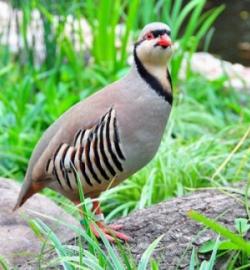Independence Day (Urdu: یوم آزادی; Yaum-e Āzādī), observed annually on 14 August, is a national holiday in Pakistan. It commemorates the day when Pakistan achieved independence and was declared
Pakistan National Language Urdu

Urdu (اردو) is the national language (قومی زبان), lingua franca and one of two official languages of Pakistan (the other currently being English). Although only about 8% of Pakistanis speak it as their first language, it is widely spoken and understood as a second language by the vast majority of Pakistanis and is being adopted increasingly as a first language by urbanized Pakistanis. It was introduced as the lingua franca upon the capitulation and annexation of Sindh (1843) and Punjab (1849) with the subsequent ban on the use of Persian. According to the linguistic historian Tariq Rahman, however, the oldest name of what is now called Urdu is Hindustani or Hindvi and it existed in some form at least from the 14th century if not earlier (Rahman 2011). It was probably the Indo-Aryan language of the area around Delhi that absorbed words of Persian, Arabic, and Chagatai (a Turkic language)—in a process like the one that created modern English. This language, according to Rahman, is the ancestor of both modern Hindi and Urdu. These became two distinct varieties when Urdu was first Persianized in the 18th century and then Hindi was Sanskritized from 1802 onwards.
The name Urdu is a short form of 'Zuban-e-Urdu-e-Mualla' i.e. language of the exalted city. In India the term Urdu, although it means 'military camp' in most Turkic languages, was used for the capital city of the king. In other words, the language of the king's capital was a Persianized form of the language known only by its previous and currently less common name Hindustani. This was shortened to 'Urdu' and this term was used for the first time in written records by the poet Mushafi in 1780 (Rahman 2011: 49). It is widely used, both formally and informally, for personal letters as well as public literature, in the literary sphere and in the popular media. It is a required subject of study in all primary and secondary schools. It is the first language of most Muhajirs (Muslim refugees who fled from different parts of India after independence of Pakistan in 1947), who form nearly 8% of Pakistan's population, and is an acquired second language for the rest. As Pakistan's national language, Urdu has been promoted to promote national unity. It is written with a modified form of the Perso-Arabic alphabet—usually in Nastaliq script.
About Pakistan
-

-

Muhammad Ali Jinnah (born Mahomedali Jinnahbhai; 25 December 1876 – 11 September 1948) was a lawyer, politician, and the founder of Pakistan.[1] Jinnah served as leader of the All-India Muslim
-

Allama Iqbal (علامہ اِقبال) (November 9, 1877 – April 21, 1938), widely known as Muhammad Iqbal, was a poet, philosopher, and politician, as well as an academic, barrister and scholar[1][2] in
-

Pakistan is one of nearly 200 countries illustrated on our Blue Ocean Laminated Map of the World. This map shows a combination of political and physical features. It includes country boundaries,
-

The Qaumi Taranah (Urdu: قومی ترانہ, Qaumī Tarānah pronounced [ˈqɔː.mi ˈt̪ə.rɑː.nɑ], lit. “National Anthem”), also known as Pāk Sarzamīn (Urdu: پاک سرزمین, pronounced [ˈpɑːk ˈsər.zə.miːn], lit
-

The salwar kameez is the national dress of Pakistan[1][2] and is worn by men and women in all four provinces Punjab, Sindh, Baluchistan and Khyber Pakhtunkhwa in the country and in Azad Kashmir.
-

For thousands of years, the jasmine plant has been cultivated not only for the beauty of its small, white, star-like flowers, but it has also been prized for its intoxicating scent. Originating in
-

Cedrus deodara (deodar cedar, Himalayan cedar, or deodar/devdar/devadar/devadaru; Urdu: ديودار deodār/devdār; Punjabi: دیار is a species of cedar native to the western Himalayas in eastern
-

The markhor (Capra falconeri; Pashto: مرغومی marǧūmi; Persian/Urdu: مارخور), also known as the screw horn goat, is a large species of wild goat that is found in northeastern Afghanistan,
-

The chukar partridge or chukar (Alectoris chukar) is a Eurasian upland gamebird in the pheasant family Phasianidae. It has been considered to form a superspecies complex along with the rock
-

Urdu (اردو) is the national language (قومی زبان), lingua franca and one of two official languages of Pakistan (the other currently being English). Although only about 8% of Pakistanis speak it
-

Field Hockey is the national game of Pakistan and wearing green shirts represent the Pakistan Hockey Federation in international field hockey competitions. Even though field hockey is the
-

The Nishan-i-Haider (Urdu: نشان حیدر meaning "Order of the Lion") is the Highest' military award given by Pakistan. Awarded "to those who have performed acts of greatest heroism or most
-

The Hilal-i-Jur'at (Urdu: ہلال جرات [ɦəˈlaːl ə dʒʊˈraːt̪], as if it were Halāl-e-Jurāt; English: Crescent of Courage , sometimes spelled as Hilal-e-Jur'at, Hilal-e-Jurat, Hilal-i-Jurrat and
-

Sitara-e-Jurat (Star of Courage) is the third highest military award of Pakistan. It was established in 1957 after Pakistan became a Republic; however, it was instituted retrospectively back to
-

Sitara-e-Basalat (Star of Good Conduct) is a non-operational award of Pakistan Armed Forces given to individuals for distinguished acts of gallantry, valor or courage while performing their duty.[
